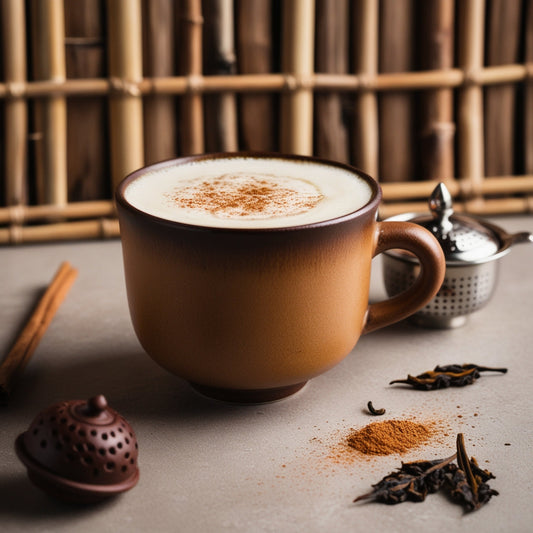Overview
Ever wondered why green tea has been such a beloved beverage for centuries?
This ancient brew, with its delicate flavor and impressive health benefits, has a fascinating story that spans from ancient China to its place in cultures around the world. In this article, we’ll dive into the history of green tea, explore its different types, uncover its many benefits, and share some handy tips for brewing the perfect cup at home. Let’s uncover the secrets behind green tea and see why it remains a favorite choice for wellness and enjoyment.
Table of Contents
- Introduction
- History of Green Tea
- How Green Tea Looks Like
- How is Green Tea Prepared?
- Types of Green Tea
- Benefits of Green Tea
- How to Choose Quality Green Tea
- How to Brew Green Tea at Home
- Conclusion
Introduction
People have cherished green tea for centuries, and for good reason. Its roots stretch back to ancient China, where people enjoyed it for its refreshing taste and revered it for its health benefits. As this tea spread across Asia and beyond, it evolved into a symbol of wellness and cultural heritage. Moreover, with its rich history, diverse types, and numerous benefits, this tea offers a wealth of knowledge and enjoyment. Whether you're an experienced enthusiast or new to its advantages, exploring this timeless drink will undoubtedly enhance your appreciation and understanding.
History of Green Tea
The story begins in ancient China, where legend has it that Emperor Shen Nong accidentally discovered it. While boiling water, a few leaves from a nearby tea tree drifted into his pot, creating the very first cup of green tea. This event, said to have happened around 2737 BCE, marked the beginning of green tea’s long and storied journey.
During the Tang Dynasty (618–907 CE), it gained popularity in China. Tea cultivators and scholars refined its production, consequently leading to the development of various brewing techniques and ceremonies. By the Song Dynasty (960–1279 CE), this tea had become deeply embedded in Chinese culture. During this period, people introducing more sophisticated tea-drinking rituals, further enhancing its significance.
In Japan, green tea’s arrival in the early 9th century was thanks to Buddhist monks who brought it from China. By the 12th century, it had become an integral part of Japanese culture, partly due to the efforts of Zen monk Eisai. Eisai praised it’s health benefits and played a key role in its cultivation in Japan. The Japanese developed their own tea varieties and rituals, further enriching green tea’s global appeal.

How Green Tea Looks Like
These leaves are small and vibrant, often showing a crisp, fresh appearance. When dried, the leaves can range from a deep green to a lighter, yellowish-green, depending on their processing.
Once brewed, it turns into a pale green to yellowish infusion. The exact shade can vary based on the tea’s quality and processing method. High-quality ones typically yields a bright green liquor, while lower-quality teas might produce a more muted color.
Different types of green tea also affect its appearance. For instance, matcha, a powdered green tea, creates a frothy, vivid green drink. Sencha, a whole-leaf tea, results in a subtler green infusion. Gyokuro, grown in the shade, yields a deeper green with a rich flavor.
How is Green Tea Prepared?
Preparing it is straightforward but requires attention to detail for the best results:
- Select Your Tea: Opt for high-quality green tea leaves or tea bags. Loose leaf tea generally provides better flavor than tea bags.
- Heat Water: Use fresh, filtered water. Heat it to about 175°F (80°C). Avoid boiling water, as it can make green tea taste bitter.
- Steep: Place the tea leaves or tea bag in your cup or teapot. Steep for 2-3 minutes. If you steep too long, the tea may become bitter.
- Remove Leaves or Tea Bag: After steeping, take out the leaves or tea bag to prevent over-extraction. This step is crucial for maintaining the tea’s delicate flavor.
- Enjoy: Drink your tea plain or add a touch of honey or lemon if you like. Feel free to experiment with steeping times and temperatures to find your ideal flavor.
Types of Green Tea
It comes in several varieties, each with its own unique characteristics:
- Sencha: This is Japan’s most popular and famous tea, known for its fresh, grassy flavor and vibrant green color. It’s made from steamed and rolled young tea leaves.
- Matcha: A powdered tea with a rich, creamy taste. It’s made from shade-grown leaves ground into a fine powder. Matcha is often used in traditional Japanese tea ceremonies and in various recipes.
- Dragon Well: A Chinese tea with a slightly sweet flavor. Its leaves are flat and pan-fired, giving it a distinctive aroma and taste.
- Gyokuro: A premium Japanese tea with a sweet, umami flavor. It’s grown in the shade, enhancing its taste and aroma.
Benefits of Green Tea
It offers a range of health benefits that make it a popular choice among wellness enthusiasts:
1. Rich in Antioxidants:
This tea is packed with catechins, which help reduce oxidative stress. Consequently, these antioxidants protect cells and may lower the risk of chronic diseases. For instance, a study found that catechins from this tea can inhibit oxidative stress and inflammation.
2. Supports Metabolism:
Additionally, the combination of caffeine and catechins in the tea can boost metabolism and assist in weight management. As a result, research suggests that it can enhance fat oxidation and increase calorie burning.
3. Enhances Brain Function:
Furthermore, it contains L-theanine, an amino acid that, in combination with caffeine, can improve cognitive function and mood. Notably, L-theanine promotes relaxation without causing drowsiness, which helps with focus and mental clarity. A study demonstrated that L-theanine could positively affect cognitive performance and mood.
4. Promotes Heart Health:
Moreover, drinking tea regularly is linked to a lower risk of cardiovascular diseases. Its antioxidants can improve cholesterol levels, lower blood pressure, and enhance blood vessel function.
How to Choose Quality Green Tea
When selecting green tea, keep these tips in mind to ensure you’re getting a high-quality product:
1. Check the Source
Look for tea from reputable regions like Japan or China, known for producing quality green tea.
2. Examine the Appearance
High-quality tea should have vibrant green leaves and a fresh, grassy aroma. Avoid tea that looks dull or smells musty.
3. Consider Freshness
Choose tea with a recent harvest date for the best flavor and potency. It can lose its freshness over time, so consume it within a few months of purchase.
4. Read Reviews
Research different brands and read customer reviews to find reliable producers known for their quality.
How to Brew Green Tea at Home
Brewing it at home is simple and rewarding. Here’s how to do it:
- Select Your Tea: Pick your favorite tea variety based on your taste and health goals.
- Heat Water: Bring water to around 175°F (80°C). A thermometer can help you achieve the perfect temperature.
- Steep: Place the tea leaves or tea bag in your cup or teapot and steep for 2-3 minutes. Adjust the steeping time to suit your flavor preference.
- Enjoy: Remove the leaves or tea bag and enjoy your green tea. Feel free to experiment with different brewing methods to find your perfect cup.

Conclusion
It’s rich history and numerous benefits have made it a cherished beverage worldwide. From its ancient origins in China to its current status as a global favorite, green tea continues to captivate people with its flavor and health-promoting properties. Whether you enjoy it for its taste or its many benefits, understanding its background, types, and preparation can enhance your experience. As you explore the world of green tea, you might also find it interesting to discover how other traditional teas, like pu-erh tea, fit into a balanced diet.
Q&A Section
Q1: How does green tea compare to black tea in terms of health benefits?
A1: Both green and black teas come from the Camellia sinensis plant but are processed differently. It is less oxidized and retains more of its antioxidants compared to black tea. This means it typically has higher levels of catechins, which are associated with various health benefits, including improved heart health and enhanced brain function.
Q2: Can I drink green tea if I’m sensitive to caffeine?
A2: Yes, you can. It contains less caffeine than coffee or black tea. If you’re sensitive to caffeine, you may want to opt for decaffeinated variant or limit your intake to avoid any adverse effects.
Q3: Is it better to drink green tea hot or cold?
A3: Both hot and cold ones offer the same health benefits. The choice depends on your preference and the weather. Hot green tea is comforting and can be soothing, while cold green tea is refreshing and can be enjoyed as an iced beverage.






